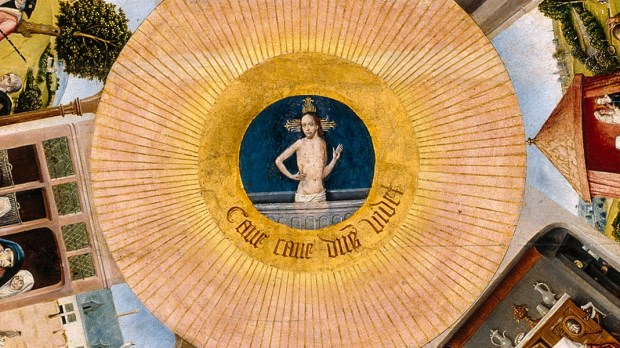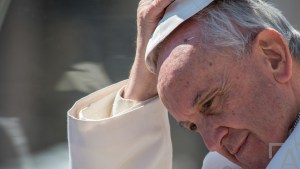It’s November, the month where we pray for the dead and remember the four last things: Heaven, hell, death and judgment.
Actually, the four last things are so important that the Catholic Church has built opportunities to remember them into our lives. Here are four ways the Church puts the four last things before us each day.
First, the Mass is a visit to heaven.
“The heavens open and multitudes of angels come to assist in the Holy Sacrifice of the Mass,” said St. Gregory the Great
The Church doesn’t just say that Mass is a “foretaste” of heaven; it says that it is a place where heaven comes down to meet us.
Everyone is there. We gather first of all with Christ, the “principal agent of our Eucharistic assembly” we gather also with the Church — “not only the members still here on earth, but also those already in the glory of heaven.” Also, “Mary is present, with the Church and as the Mother of the Church, at each of our celebrations of the Eucharist,” said St. John Paul II.
The Mass as Heaven on Earth is the subtitle of Scott Hahn’s The Lamb’s Supper. “When we begin to see that heaven awaits us in the Mass, we begin already to bring our home to heaven,” he writes, “And we begin already to bring heaven home with us.”
Second, the Rosary warns again and again about hell.
In the Rosary, we go through the four last things again and again, asking Mary to “pray for us sinners now and at the hour of our death” and placing ourselves in the presence of “Our Father who art in Heaven,” at whose judgment we hope he will “forgive us our trespasses,” and “deliver us from evil.”
It is the final evil of hell we need to be delivered from.
“Following the example of Christ, the Church warns the faithful of the ‘sad and lamentable reality of eternal death,’ also called ‘hell,’” says the Catechism. “Our freedom has the power to make choices for ever, with no turning back,” it adds.
C.S. Lewis warns, “The safest road to hell is the gradual one — the gentle slope, soft underfoot, without sudden turnings, without milestones, without signposts.”
Our Lady of Fatima agreed, and put signposts up for us in the Rosary, teaching three shepherd children to add this prayer after each decade of the rosary: “O my Jesus, forgive us our sins. Save us from the fires of hell. Lead all souls to heaven, especially those in most need of thy mercy.”
Third: Judgement and the Examination of Conscience.
We will each be judged one day when “the glorious Christ will reveal the secret disposition of hearts and will render to each man according to his works, and according to his acceptance or refusal of grace,” says the Catechism.
It is a longstanding practice of Catholics to prepare for that moment nightly with an examination of conscience — reviewing our lives and naming our sins — and an examination of conscience is required for the sacrament of confession.
When it is done properly, “The examination of conscience never induces despair, always hope,” said Fulton Sheen.
I switch between six different ways of doing this: reviewing the seven capital sins, St. Paul’s description of love, the Ten Commandments, Jesus’s statements about the purpose of life, and examining my relationship with God, others and self.
Last: Night prayer is a nightly memento mori, a reminder of death.
“Keep death daily before your eyes,” St. Benedict says in his Rule, and his monastic movement helped shape the Liturgy of the Hours such that it is a lifetime in miniature each day.
At Night Prayer, Catholics pray using Simeon’s words from the Gospel of Luke. It had been revealed to him that he would not die before seeing the Messiah. Seeing the infant Jesus he prayed, “Now you may let your servant go in peace,” for “my own eyes have seen the salvation which you have prepared in the sight of every people.”
By recalling his words each night before we enter the unconsciousness of sleep, we practice the attitude we should have before our final unconsciousness in death.
Then, the last thing we pray each night is the “Salve Regina,” calling upon the queen of heaven for mercy. As St. Thomas Aquinas put it, “As sailors are guided by a star to the port, so are Christians guided to heaven by Mary.”




